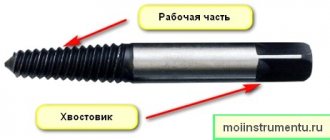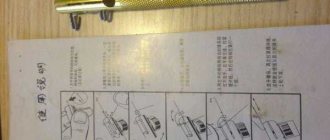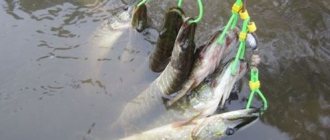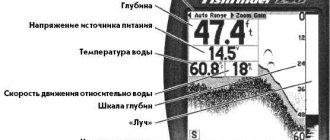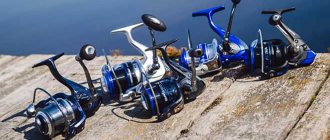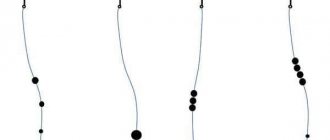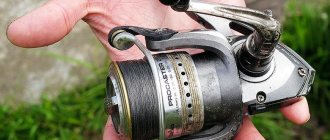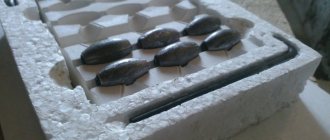Operating principle of the extractor
How to use the extractor?
Extractor for fishing [salapinru]
A fishing extractor is designed to quickly remove a hook from a fish's mouth. There are two types of extractors: one type is made in the form of a needle, at the end of which there is a special cut, with the help of which the extraction process is carried out, and the second type is made in the form of tweezers, with the help of which the hook is grabbed and pulled out. To ensure a reliable grip, notches are made on the tips of the tweezers, which allow you to securely grip the hook.
Making the simplest do-it-yourself fishing extractor
To make the simplest extractor, you don’t need any other materials other than a toothbrush. And the work will take no more than half an hour.
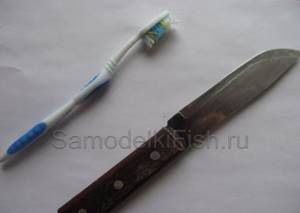
Saw off the brush head, leaving only the handle;

Using a file or knife, make a cut, giving it the shape of a fork.

In order not to lose the extractor, you need to make a hole in the handle of the toothbrush and tie a fishing line with a carabiner clasp.
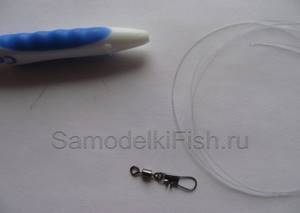
Types of extractor for fishing
Extractor in the form of a needle
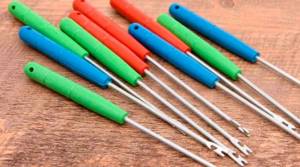
As mentioned above, there are two types of extractors. Most fishermen use a needle-shaped tool, since its operating principle is somewhat simpler, and it takes up less space. Plus, they are much more reliable. If you handle it correctly and carefully, it can last for more than one season. Needle extractors are made from both metal and plastic.
Needle-type extractor models are very popular among fishermen because they are reliable, lightweight and compact. In addition, with their help it is easy to pull the hook out of the mouth of even a very small fish, such as a perch, for example. Very often, anglers hang it around their neck with an elastic band, which allows them to act much faster. In this position, it does not interfere with the fisherman at all, since it is quite light.
Extractor in the form of tweezers
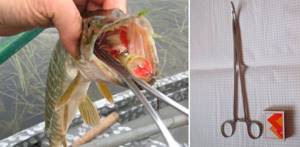
The second option is an extractor in the form of tweezers. A similar device is made of metal, so this type is also reliable. At the same time, its handles are rubberized, so they are quite comfortable, allowing you to work even with wet hands.
This extractor is used mainly by spinning anglers who practice catching predatory fish, especially pike. With the help of such an extractor, it is convenient to pull out various artificial baits armed with several sharp tees from the mouth of a predator. They also take up little space, although slightly larger than needle-shaped extractors. Unfortunately, with such an extractor it is difficult to remove the hook from the mouth of, for example, an average crucian carp. But to get a hook out of the mouth of a pike or pike perch, you simply cannot do without tweezers.
Types of devices
All tools that can be found on sale today are classified into several varieties according to two criteria - material of manufacture and shape.
Extractors for fishing can be made:

Made of plastic. They are distinguished by their low price. Another important advantage is that when the hook is removed, the leash is practically not damaged. However, unfortunately, such extractors themselves have low strength and quickly become unusable.- Made of metal. They are characterized by increased strength. More expensive than plastic ones, but can damage the leash.
- Made of wood. They have almost the same properties as plastic ones. Finding them on sale is quite difficult.
Plastic and wooden ones are better suited for fishing in winter. Their surface temperature does not drop as quickly as in the case of metal tools. In addition, they are lightweight and non-slip.
As for the form, they can be made in the form:
- Spirals. They are easy to use, but when removing fish from the hook you have to carefully watch the process itself. It's unlikely to work by touch here.
- Forks. They are widespread, but it is almost impossible to work with them blindly.
- Cylinder. There are slots at the end of the tool. This type of device for removing fish from a hook is better than others. The fish itself is practically not injured, and you can act without supervision.
- Surgical clamp. It is usually used when catching predatory fish.
Which extractor is better?
There is a wide variety of models on the fishing accessories market. Each of them has its own advantages and disadvantages.
Extractor with Stonfo needle
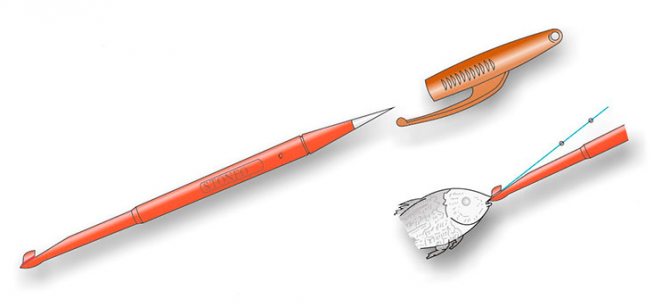
It is produced in two versions, which differ only in dimensions, but their operating principle is identical. A fairly durable design that is in great demand among amateur and professional fishermen. Thanks to an interesting addition associated with the presence of a special needle, you can untangle various knots that have formed on the fishing line during the fishing process. In addition, the needle can be used in other cases. As a rule, this model is used by those who like to catch peaceful fish.
This extractor is not intended for extracting spinners, therefore, it is better to use it when fishing with traditional methods and gear, in the form of a regular float rod.
Extractor 24 LH from PRESTON
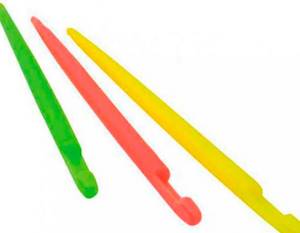
You should also pay attention to this model because it is durable and reliable. In addition, the 24 LH extractor takes up little space. It will help you remove hooks of any type from the mouth of a fish. This fisherman's assistant is not that expensive.
Extractor SALMO 9604-009
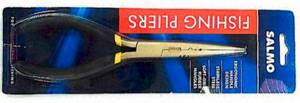
This tool for extracting hooks is made in the form of pliers, 23 cm long, which allows you to cope with the task without any problems. The handles of this tool are rubberized and black. Perfect for spinning fishermen who need it to extract various artificial baits from the mouth of a predator. At the same time, it is impossible to damage the bait.
The metal parts of the SALMO 9604-009 extractor are painted with waterproof paint, which protects them from corrosion. This is necessary because it has to work in a highly humidified environment.
How to use the extractor
There are several types of devices.
- Screwdriver
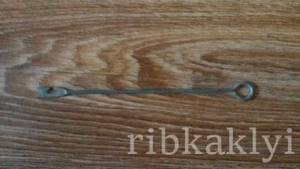
- Spiral
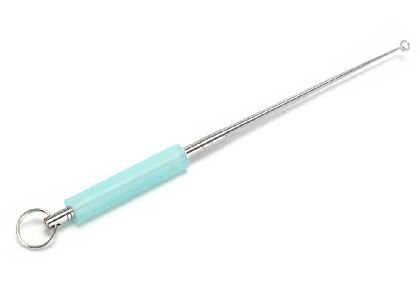
- Fork
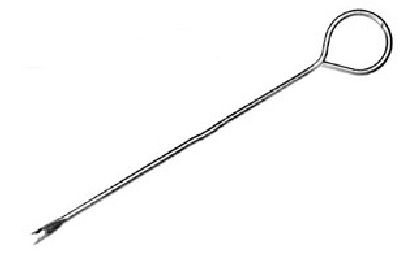
- Cylinder
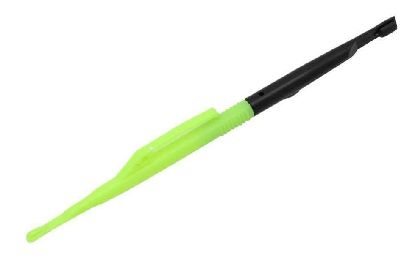
- Forceps
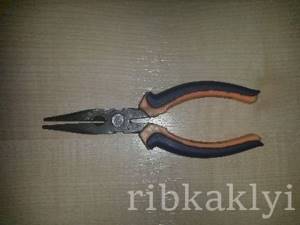
Screwdriver
It is made of steel wire with a diameter of 3-4 mm, on one side it has a ring, a plastic or wooden handle. On the other side there is a flat shape with slots for threading the cord and hooking the hook. Such an extractor is suitable for removing a hook from the mouth of a large fish with a shallowly swallowed hook, if fishing is carried out according to the catch-and-release principle.
For convenience, a hole with a cut is made on a flat surface into which a fishing line is inserted; the hook is unhooked by a fork-shaped slot at the end of a screwdriver. Such a release should not have sharp edges, otherwise they can easily damage the fishing line.
Spiral extractor
It has the end of the wire twisted in the form of several turns of a spiral, which is wound onto a stretched fishing line and when inserted into the fish’s mouth with light pressure on the hook, it easily unfastens it.
Fork
The simplest of the releases is the fork extractor. The device can be easily made from available materials even when fishing, for example, a branch suitable for the size of the fish’s mouth, which subsequently works (like an extractor). To use it, you need some skill, but in cases where you don’t want to cut off a deeply embedded hook, you can use this one.
Cylindrical
And finally, the most convenient to use for peaceful fish to free them from hooks is a cylindrical extractor. It looks like a stick made of plastic with a cone-shaped end, in which there is a slot for threading fishing line.
- The release is convenient to use.
- Plastic does not scratch the leash.
- The soft round shapes of the device do not injure the trophy’s mouth and help to easily and harmlessly remove the hook.
Forceps
A fishing extractor can be not only in the form of sticks, but also various forceps or medical clamps. Such extractors are used when catching predatory fish. For convenience, we pull out the hook together with the yawner, which holds the fish’s mouth from biting.
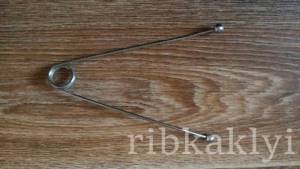
The yawner is inserted into the open mouth, and then the hook is pulled out from the soft tissue with forceps. The length of the handles should not be less than 23 cm.
Which extractor to buy
As mentioned above, the choice of tools depends on the type and size of the trophy being hunted. When fishing for roach, it is better to use a cylindrical extractor by pulling out the hook, and when removing the hook from the pike's mouth, it is better to use tongs. Let's look at a few of the most commonly used items.
- An extractor with a needle is a common device that has a release on one side and a needle on the other; the needle is used to untie knots on a fishing line.
- Stonfo is the name of a company that produces products for fishermen. In their arsenal, they have an extractor consisting of two parts that are inserted into one another, as well as a needle for untying knots.
- Preston, a company that produces various extractors and knotters.
- Salmo specializes in producing, in addition to conventional extractors, forceps.
Making an extractor with your own hands
Making a simple fishing extractor is not difficult, just select the material. This could be a tree branch of suitable diameter, a toothbrush, a piece of wire, etc.
Let's see how to do it.
- Take a branch of the required length (preferably dry), 25 centimeters. One end is cut at an angle of approximately 30 degrees. A cut is made in the cut with a depth of 5-10 mm. When pulling out the hook, a fishing line is inserted into this cut, the branch is pushed into the mouth along the cord, puts pressure on the hook and releases it.
- A solid wire of suitable diameter is selected, and one turn of the spiral is wound from one end. The other is bent and wrapped around the wire in the form of a handle. For convenience, the handle can be wrapped with electrical tape. The extractor is used in the same way as the factory one.
- You can attach a needle to the extractor by soldering it into a plastic toothbrush handle, or by gluing it into a wooden device. An extractor with a needle will help you unwind tangled fishing line or untie knots.
The toothbrush is cut at the narrowest point near the brush and an angular cut is made in the same way as on a branch. The extractor for fishing with your own hands is ready. The device is used in the same way as a branch.
They make the product absolutely anything, as long as it is convenient, it all depends on the imagination and capabilities of the fisherman.
How to treat wounds
If the pike was still able to catch the hands with its teeth, then it is necessary to treat the wounds with products that should be in the fisherman’s first aid kit. If this is not done, then the smallest and most harmless holes from pike teeth can soon turn into festering and painful wounds, especially if your hands are often in the water, which is common for anglers. A fisherman's first aid kit should contain: iodine, brilliant green, hydrogen peroxide (hydrogen peroxide). After the wounds have been treated, they must be covered with a band-aid.
Share with your friends!
Self-production
It is not difficult to make an extractor with your own hands. It could even be an improvised device made while fishing. To do this, you need to clear a thin branch of bark and twigs, and use a knife to make the working end thin, and cut a slot there. This version of the device is quite suitable if the store bought one is left at home.
Photo 3. From a suitable stick.
More reliable materials can be used. In order to make an extractor for fishing with your own hands, you need to find an old toothbrush that has become unusable. The head with bristles must be cut so that the thin leg remaining with the handle is as long as possible - this will make it more convenient to work with the extractor. Next, you need to make a cut of a suitable size on this leg and grind it so that there are no burrs left there that could damage the leash made of thin fishing line when pulling out the hook.
Photo 4. From a toothbrush.
It is not difficult to make an extractor with a spiral working part. To do this, just bend the wire (preferably made of stainless steel) and install it in a wooden handle. However, the most convenient extractors, which have a cylindrical working part, are difficult to manufacture independently.
